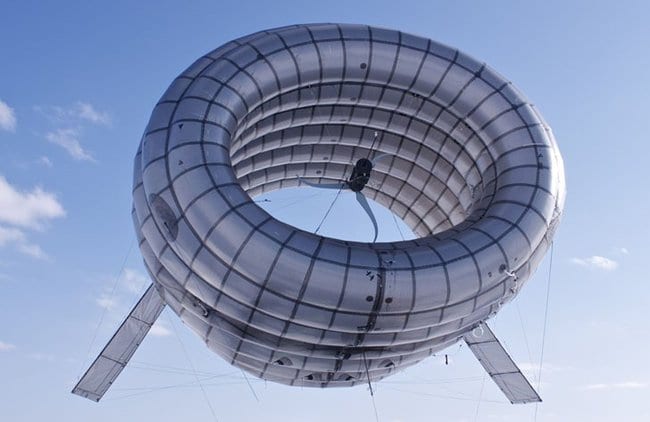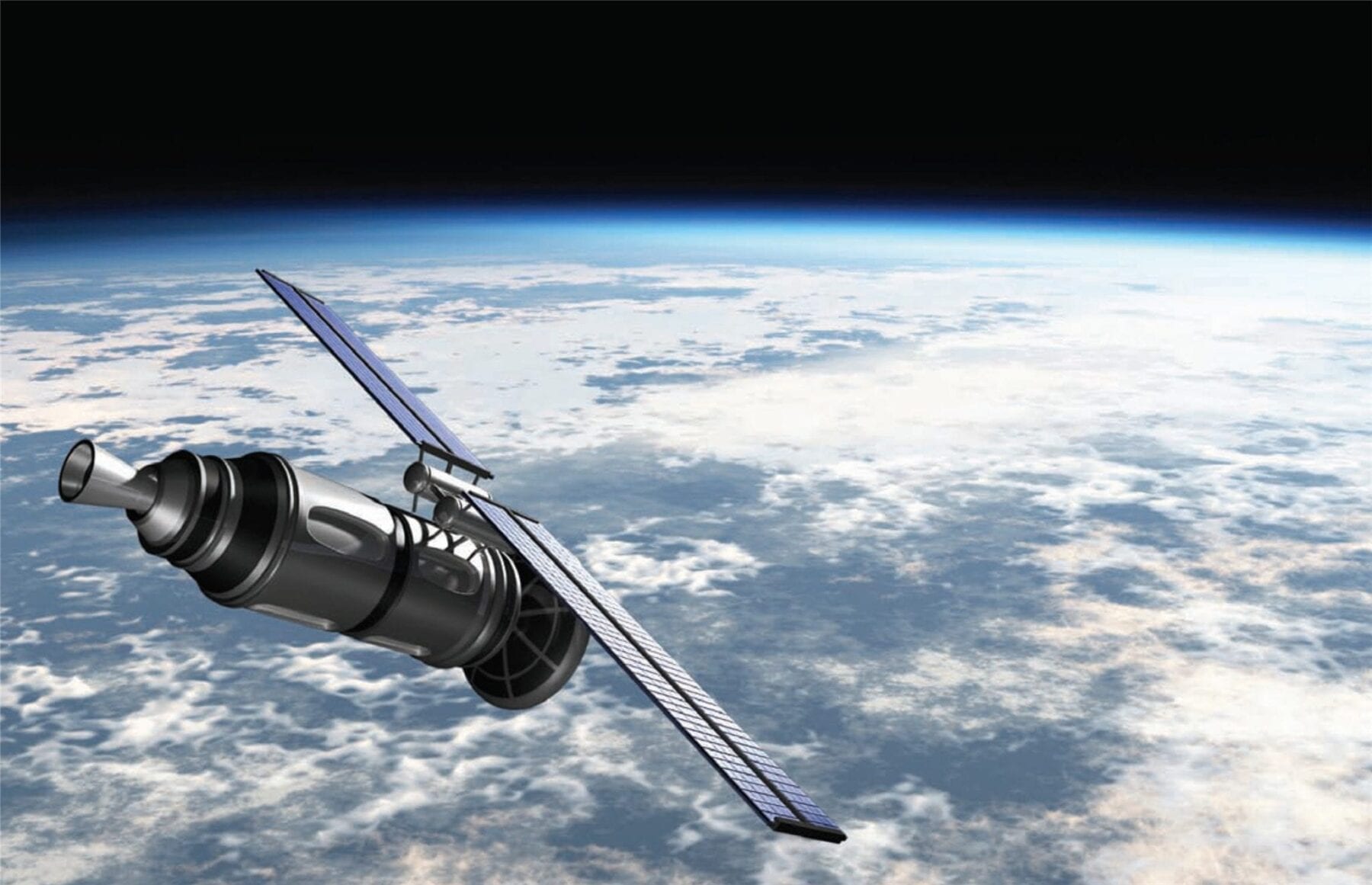
Researchers at the Department of Civil and Environmental Engineering of the Universitat Politècnica de Catalunya (UPC) have designed and patented a floating platform for offshore wind turbines that can reduce energy costs to 12 euro cents per kilowatt hour (kWh) through a more efficient design and cheaper building materials.
Researchers Climent Molins and Alexis Campos, of the UPC’s Department of Civil and Environmental Engineering, have developed a model of a floating structure for offshore wind turbines anchored at great sea depths that makes them competitive through cost savings in construction and maintenance.
The prototype, WindCrete, is a cylindrical structure with a large float and a ballast base that makes it self-stabilising. According to the researchers, who belong to the Barcelona School of Civil Engineering, the main innovations of this model compared to similar ones on the market are the seamless, monolithic structure and the use of concrete for its construction.
By using concrete instead of the more expensive steel that has been used previously, the construction cost is reduced by 60%. In addition, concrete is more resistant in the marine environment, so the structure has fewer maintenance requirements and a life of about 50 years. The absence of joints in the platform increases its durability against the effects of wind and sea and avoids the damage that normally appears in transition areas.
The WindCrete includes a 5-megawatt (MW) wind turbine that can carry rotors of up to 15 MW with a minimum increase in the cost, making it far more economical. The new system reduces the cost of wind energy to 12 cents per kilowatt hour (kWh). This is half the price per kWh of this type of energy (about 24 cents) in the Canary Islands, one of the regions where wind power is to be promoted.
Given the long useful life of this prototype, the possibility of replacing the turbine with a more powerful and more profitable one has been considered.
Partially submerged offshore platforms of this type require a minimum depth: 90 m in the case of WindCrete. However, there is no technical maximum depth at which they can be installed. In the Gulf of Mexico, for example, there are oil platforms of this type anchored at depths of up to 2300 m.
European project
The prototype was developed within the framework of the European project Alternative floating offshore substructure for offshore wind farms(AFOSP) , which is carried out in the framework of KIC-InnoEnergy in collaboration with Stuttgart Wind Energy at the University of Stuttgart and Gas Natural Fenosa. A preliminary design was carried out to ensure technical and economic feasibility.
In order to check the behaviour of the platform and its anchoring system in an environment that simulates the sea, trials were also carried out in the wave flume of the UPC’s Maritime Engineering Laboratory (LIM), using a WindCrete prototype with a scale of 1:100.
Read more: Design and patenting of a low-cost offshore wind turbine
The Latest on: Low-cost offshore wind turbine
[google_news title=”” keyword=”low-cost offshore wind turbine” num_posts=”10″ blurb_length=”0″ show_thumb=”left”]
via Google News
The Latest on: Low-cost offshore wind turbine
- Ørsted inaugurates Greater Changhua 1 and 2a offshore wind farms in Taiwanon April 26, 2024 at 4:49 am
D anish renewable energy company Ørsted has officially inaugurated the 900MW Greater Changhua 1 and 2a offshore wind farms, located off the coast of Taiwan. These installations have successfully ...
- Irish electricity customers face paying for new €5bn offshore grid though fees and chargeson April 25, 2024 at 10:00 pm
National electricity grid operator EirGrid will have to finance about €5 billion worth of infrastructure needed to get the electricity generated offshore to customers, a paper issued by the Commission ...
- GE Vernova chief Strazik says no more offshore wind orders without better termson April 25, 2024 at 8:33 am
GE Vernova is “very appreciative” of its partnership with New York and other states to help build the US offshore wind industry but won’t book new turbine orders unless economic terms are “materially ...
- How Wind Giant Vestas Turned Its Fortunes Aroundon April 24, 2024 at 9:11 pm
We won't get to carbon neutrality by fooling each other with targets that are not being fulfilled,” Henrik Andersen, chief executive officer of Danish wind energy company Vestas, says on this week’s ...
- Blue-state lobstermen say Biden's 'destructive' green energy plans could cost their livelihoodon April 23, 2024 at 8:15 am
New England lobstermen are taking aim at the Biden administration’s latest moves to make his offshore wind energy projects "political proof" from a possible administration change in 2024.
- Offshore wind conference features tour of Avondale Global Gatewayon April 23, 2024 at 1:27 am
Busloads of folks took a tour of Avondale Global Gateway on Monday afternoon as Louisiana becomes an integral part of the growing industry.
- A Straw in the Wind - Will Achieving Grid Parity Propel India’s Offshore Wind?on April 22, 2024 at 10:47 pm
Pursuing India’s offshore wind ambitions is not only about reaching grid parity but also about navigating the complexities of implementation, mitigating risks, and ensuring inclusive development.
- More wind woeson April 22, 2024 at 7:00 am
It will also be another challenge for President Joe Biden’s already likely out-of-reach 30 gigawatt goal for offshore wind by 2030.
- Why America Needs Public Wind Poweron April 22, 2024 at 3:00 am
Op-ed: The for-profit offshore wind energy industry is floundering. It’s time to take the energy transition into our own hands.
- Timbermill Wind turbine parts en route to Chowan Countyon April 19, 2024 at 3:30 am
Those white blades the length of a city block that have been at the North Carolina Port at Morehead City the last few weeks are destined for great heights.
via Bing News










